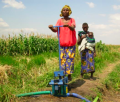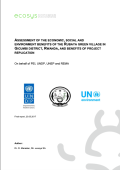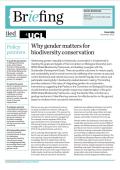
This policy brief draws on the findings from the report and makes an economic case for investing in ENRs to reduce poverty within the context of what is generally known as the ‘poverty-environment nexus.’

This economic analysis report is structured around two arguments. Firstly, natural resources and ecosystem services in particular have significant contribution to economic growth and poverty reduction. Secondly, failure to manage natural resources, conserve and protect the ecosystem will result in costs of degradation that will compromise medium and long term sustainable development. An ecosystem services approach has been used which is capable of capturing aspects of the environment and natural resources that are usually neglected either because they do not have market values or they cannot readily be quantified. The approach is supported by Case Studies of Rugezi Wetlands and Gishwati Forest.

This report presents insights from a series of investigations to explore the poverty-environment nexus in Malawi and to identify sustainable pathways for poverty reduction by quantifying poverty and environment linkages. The study was commissioned by the Government of Malawi through the Ministry of Finance, Economic Planning and Development with financial and technical support from the UNDP-UNEP Poverty-Environment Initiative.

The objective of the present assessment is to determine to what extent the Rubaya green village demonstration project has been successful in raising the well-being of the beneficiaries while, at the same time, ensuring the sustainable use of natural resources and social cohesion. The project efficiency was determined to be high, leading to benefits surpassing the costs by 15% to 35%. The potential net benefits to Rwanda, the report found, justify the replication of the Rubaya green village demonstration project and to make the case for the Government and development partners to invest in the widespread replication of the project.

This briefing calls on policymakers to prioritize gender-responsive implementation of the CBD's Global Biodiversity Framework, using the Gender Plan of Action as a mechanism, and to integrate gender into budgets.
